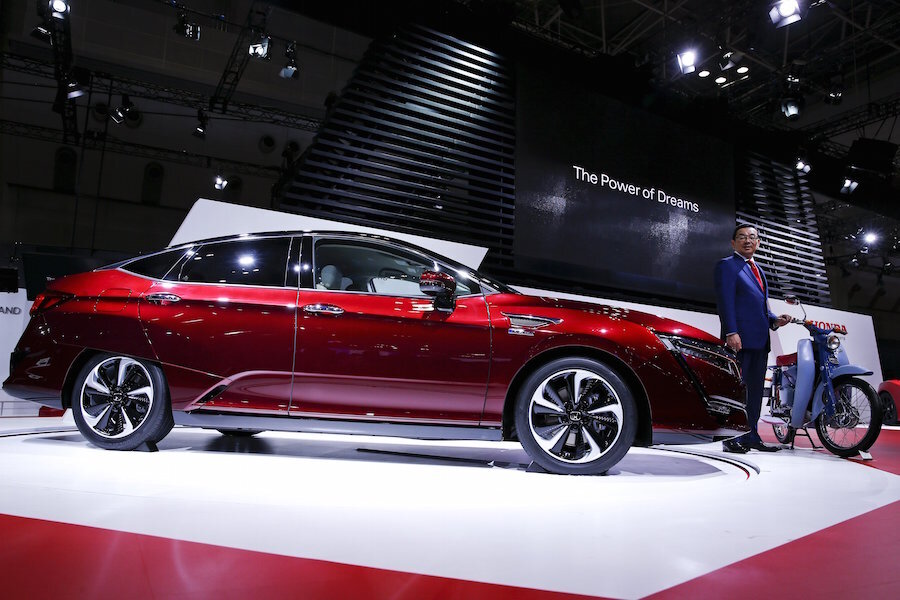Honda doubles down on hydrogen cells with 2017 Clarity Fuel Cell
Loading...
Honda is an industry leader in the development of hydrogen-powered fuel cell vehicles. In 2002, it was the first automaker to begin a retail initiative when it started leasing its original FCX hatch to fleet customers, and by 2005 it was already leasing the cars to individuals. Three years later the FCX Clarity sedan was launched and to this day there are roughly two dozen of them on American roads.
Over the past couple of years Honda has been trotting out concept versions of a new fuel cell vehicle due on the market in 2016 and destined to be the automaker’s first mass-produced vehicle to pack the advanced powertrain. Today, at the 2015 Tokyo Motor Show, we were treated to the production version which Honda has labeled the Clarity Fuel Cell.
The Clarity Fuel Cell is in the form of a mid-size sedan, albeit one with coupe-like styling, and inside there is seating for five. The car will be launched initially in Japan next March, and its only direct rival at present is the Toyota Mirai, which went on sale earlier this year. Sales in other markets, including here in the United States, should commence later in 2016.
Honda says the Clarity Fuel Cell is its first fuel cell vehicle to house the entire fuel cell powertrain (fuel cell stack and electric motor) under the hood, thus allowing the cabin to be as roomy as in a conventional sedan. The powertrain is said to be roughly the same size as a modern V-6 and peak output is rated at 174 horsepower. The storage tanks for the hydrogen fuel are located in the vehicle floor.
With its hydrogen storage tanks filled, the Clarity Fuel Cell is claimed to be capable of traveling over 300 miles. The car can also be connected to an external power feeding inverter, allowing it to serve as a mobile source of electricity for emergency situations.
Though it’s yet to be confirmed, we may end up seeing additional Clarity models such as a Clarity plug-in hybrid and Clarity electric. Such a move would mean Honda is hedging its bets on the powertrain of the future. This is in contrast to Toyota, which has been quite vocal about its commitment to fuel cell technology.
For more from the Tokyo Motor Show, head to our dedicated hub







